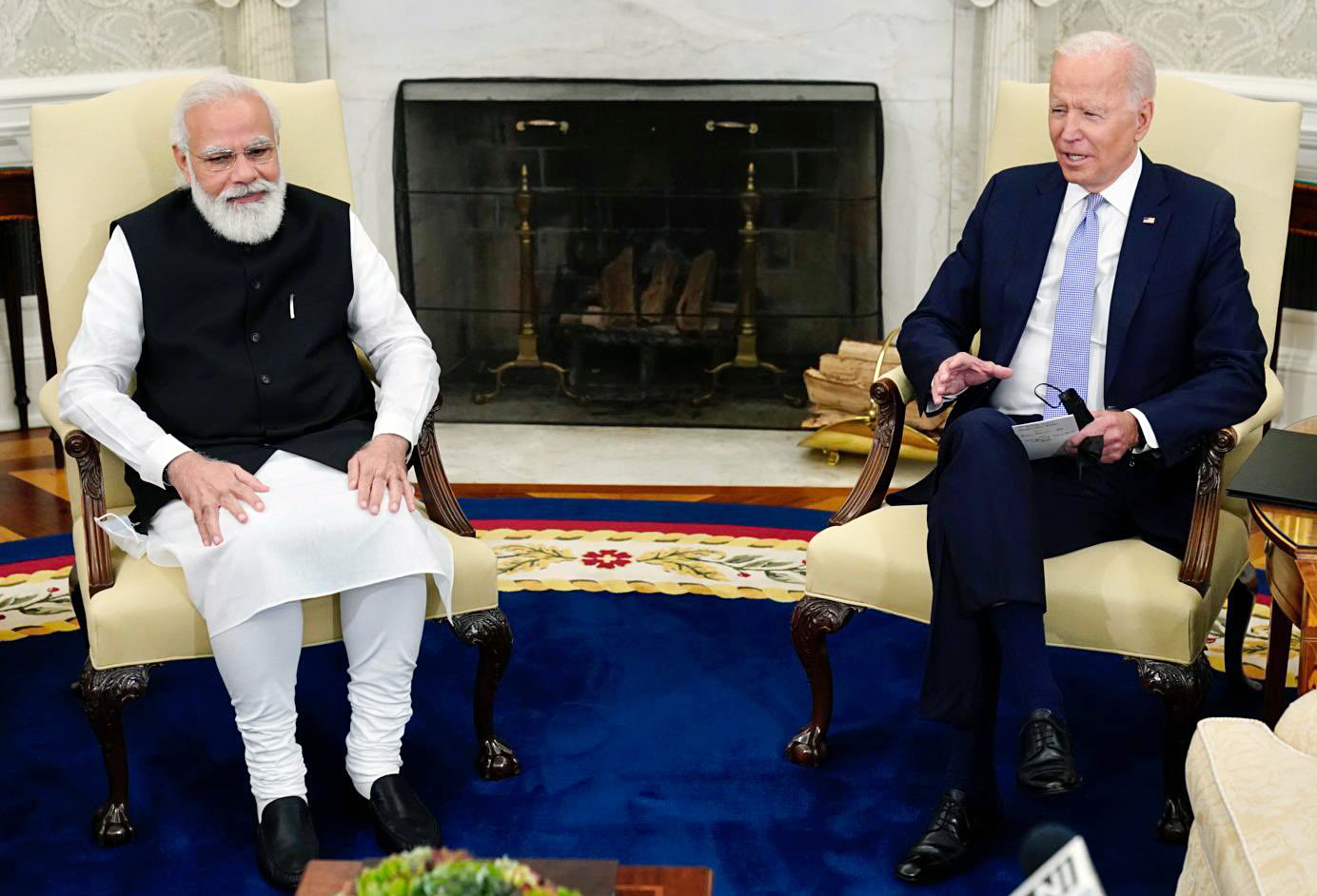When Bill Clinton visited India in March 2000, he was the first US President to do so in 22 years. And now, PM Modi and President Biden are scheduled to meet four times in two months.
“2023 is going to be a big year for India-US relationship,” so said Don Lu, currently the US Assistant Secretary of State for South and Central Asia recently. A decade back, he had served as the DCM at the US embassy in Delhi. So, he knows what he is talking about. Anyone who has been following India-US relations in recent years will not be surprised by Lu’s assertion. What kind of metamorphosis India’s relationship with the US has undergone since 2000 can be judged by a simple fact. When Bill Clinton visited India in March 2000, he was the first US President to do so in 22 years. And now, Prime Minister Narendra Modi and President Joe Biden are scheduled to meet four times in just two months.
First, they will meet on the sidelines of the G-7 summit in Hiroshima between 19 and 21 May, to which the Japanese Prime Minister Fumio Kishida had extended an invitation during his visit to India. Thereafter, they will meet in Papua New Guinea for the India-Pacific Islands Cooperation meeting that is expected to be attended by 18 Pacific Island leaders. The President of the oldest democracy and the Prime Minister of the largest democracy will then land in Sydney and meet at the Quad Summit on 24 May. The hottest month in Delhi, June, will see the Indian PM travelling to the United States on a state visit; a warm welcome awaits him during his first state visit. One shouldn’t be surprised if millions of Americans are seen doing yoga during PM Modi’s visit. And much before 2023 comes to an end, President Biden will arrive in India to attend the G20 Summit in September.
The frequency of the meetings at the top level and at the level of Ministers and Secretaries of key ministries, the joint military exercises, crucial cooperation in the field of defence, security, intelligence sharing, more than two dozen government to government missions covering diverse areas of cooperation, annual meetings under 2+ 2 dialogue and periodic close interaction between the organisations of the two countries promoting trade, business and investment (FICCI, CII, India-US Business Council, CEO Forum) have all contributed to the exponential growth of relations, but what amazes strategic analysts is the level of understanding and maturity which the two sides now display while addressing their differences on major issues. Who would have thought a decade back that India will not drop the idea of buying S-400 defence system from Russia and continue buying cheap Russian oil in such huge quantities that Russia will be catapulted as India’s largest oil supplier in spite of known American objections? While some American Secretaries couldn’t hide their annoyance at India’s persistent refusal to condemn the Russian invasion of Ukraine, President Biden, Secretary of State Antony Blinken and NSA Jake Sullivan have maintained a studied restraint in public while referring to India’s stand on Ukraine. In fact, differences in the position of the two countries on Iran, Afghanistan and Pakistan are an open secret.
Various American organisations and foundations, from time to time, with the tacit support of some Congressmen and Senators, come out with reports questioning the present state of democratic discourse, press and religious freedom and condition of the minorities in India. India’s External Affairs Minister, Dr S. Jaishankar hasn’t minced words and shown the mirror to the Americans and questioned their own record in this regard. And this is taken in their stride by the interlocutors in the US. This is a new normal in our bilateral relations.
There is a widely held perception that the newly found warmth for India on the part of Uncle Sam is largely on account of tensions in Sino-American relations. President Biden has termed China as the US’ strategic rival and vowed to outcompete China and initiated the Build Back Better idea. But decoupling from China or outcompeting China is easier said than done. Democratic India, now the most populous country in the world, is America’s natural partner to contain China’s aggressive, assertive and intimidatory behaviour against its neighbours and its unfounded claims in the South China Sea. The US considers India indispensable for the Indo-Pacific and the ever expanding outreach of the Quad. The US was instrumental in making India a partner in I2u2.
But even without the China factor, the US is India’s essential partner, for its domestic agenda. It’s not only India’s largest trading partner and investor, but also the largest source of advanced technology. India has no option but to continue working on strengthening her ties with the US, without losing her right to pursue a different path when vital national interests so warrant.
The arrival of the new American ambassador Eric Garcetti, after a gap of nearly two years, is an occasion to welcome. Notwithstanding reservations expressed in certain sections of the media that he might proactively flag issues of human rights, press freedom and religious tolerance, one must not lose sight of the fact that as the Mayor of Los Angeles he has worked for years with rich and influential Indian Americans and is aware of the sensitivities
Long live India-US friendship.
Surendra Kumar is a former ambassador of India.

